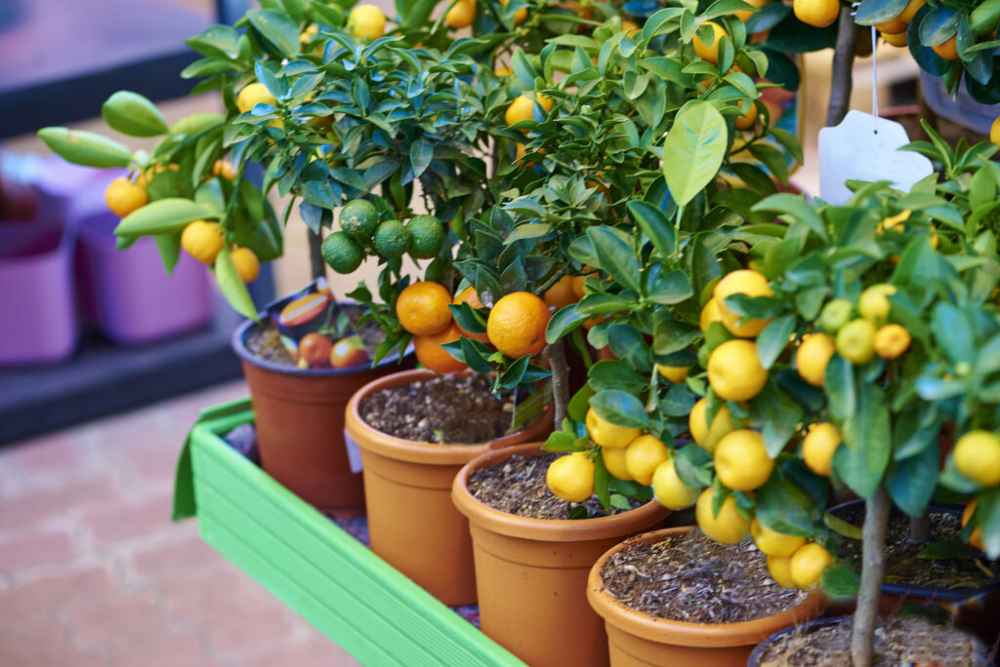
Wondering if you can grow citrus in containers
In this article we will discuss various citrus plants you can grow in containers, comprehensive step by step guide and benefits associated with this kind of gardening
Botany
Citrus is a genus of flowering trees and shrubs in the rue family, Rutaceae.
Plants in the genus produce citrus fruits, including important crops such as oranges, lemons, grape fruits, pomelos, and limes .
Growing your own citrus plants in containers is easy with the help of this comprehensive step-by-step guide
1.Choose the right Rootstocks
There are many different rootstocks available to growers.
Choose rootstock based on characteristics that are important to the growing site, such as greater nematode resistance, salt resistance, disease resistance, etc.
2.Choose the right Citrus tree for container
Standard citrus trees grow too big if you grow them indoors.
But dwarf Citrus varieties are grafted onto special roots that limit their size and speed up fruiting.
- Dwarf Meyer Lemon: A popular choice for containers due to its compact size, fragrant flowers, and sweeter-than-average fruit.
- Calamondin Orange: This small, ornamental citrus tree produces small, tangy fruits and can tolerate indoor conditions well.
- Kumquat: These small, oval-shaped fruits are sweet and tart, and the tree’s compact size makes it ideal for containers.
- Dwarf Tangerine: Varieties like “Dancy” or “Clementine” are well-suited for container cultivation, producing sweet, juicy fruit.
- Dwarf Lime: Varieties like “Bearss” or “Key Lime” are compact and can be grown in containers, yielding acidic and aromatic fruits.
Growing citrus in containers keeps them smaller
If you’re new to growing citrus, start with dwarf types known to flourish and fruit well indoors. Easy-to-grow favorites, such as Improved Meyer lemon, Key limes, kumquats and Calamondin oranges.
3.Choose the right container for citrus plant
Select plastic, terra cotta, or wooden containers.
Ensure they have adequate drainage holes.
Use a large container such as a whiskey barrel or 20-gallon container.
Plastic containers are the lightest weight and easiest to move in and outdoors with the seasons.
However, the glazed terra cotta containers look more attractive when the plants are being grown indoors as houseplants.
Every 3 – 4 years, trees will outgrow their containers.
This is usually signaled by leaf shed or browning and twig dieback which is not related to drought stress.
Move the tree to a larger pot, or lift the plant out, prune the roots and put it back in the same pot with some fresh potting mix. Remember, the ultimate size of the tree is directly related to the size of the container.
4. Choose soilless planting media
Create our own mix of peat moss, perlite, vermiculite, and composted bark.
Also includes limestone, to bring the pH to about 6.0 the ideal level for citrus.
Garden soil or native soil is too heavy for containers and will not give the roots the air they need.
5.Choose the right location for citrus in containers
Citrus should be grown in a location which receives as much direct sun as possible.
For the best fruit production, place in an area that gets six to eight hours of direct sunlight.
Watering is gauged by plant size and temperature.
Larger citrus with more perimeter color plants require more frequent watering during hot, dry conditions.
6. Watering Citrus in containers
Avoid overwatering your citrus.
Keep soil evenly moist allowing plant to dry out slightly in between watering.
Allow 1 to 2 inches of soilless media to dry between watering’s.
Water slowly until the soil is moist but not soggy.
Citrus prefer deep watering sessions compared to shallow and frequent watering.
7.Fertilizer requirements
Citrus trees require ample amounts of Nitrogen, Phosphorus and Potassium.
They also require other nutrients like Magnesium, Boron, Copper and Zinc.
They are heavy nitrogen feeders.
Look for a fertilizer that has nitrogen in a 2-1-1 or 3-1-1 nitrogen-phosphorus-potassium (NPK) ratio.
Foliar applications of trace minerals in the form of kelp or other soluble fertilizers can be effective.
8.Citrus Minerals deficiency
A nitrogen deficiency is often to blame when leaves turn yellow, especially if older leaves are yellowing from the tip to the base.
Citrus are also susceptible to deficiencies of trace minerals, such as iron, manganese and zinc that can cause leaf color to fade.
Yellowing leaves may also be caused by a high soil pH, high phosphorus or poor drainage.
9.Pruning citrus in containers
Pruning is generally not necessary, however container plants which are not receiving adequate light sometimes become ‘leggy’ and can benefit from pruning the top back by about a third. This will stimulate branching. Prune any suckers and remember that for the long term health of your tree, pruning cannot take the place of adequate light.
Well-pruned trees have higher fruit yields and are less prone to branch breakage.
10. Citrus temperature requirements
Citrus thrive within a normal temperature range of about 70 F. throughout the day and no lower than 55 degrees F. at night and cannot tolerate temperatures under 50 degrees F.
11. Citrus Pests
If you find harmful insects like scales, aphids, or mites, apply Bonide All Seasons Horticultural Oil,.
Recheck in a week to see if another treatment is needed. Proper lighting, watering, and feeding will increase your plant’s defenses against these pests.
Prior to bringing citrus plants indoors for the winter, you can apply a spray of horticultural oil or insecticidal soap labeled for use on houseplants to manage pests.
Conclusion
Growing Citrus in containers benefits you in that during harsh weather conditions you can move your plants indoors. Also citrus plants grown in containers use less space.
By following these guidelines, you can successfully grow citrus trees in containers and enjoy fresh fruit right from your own home.